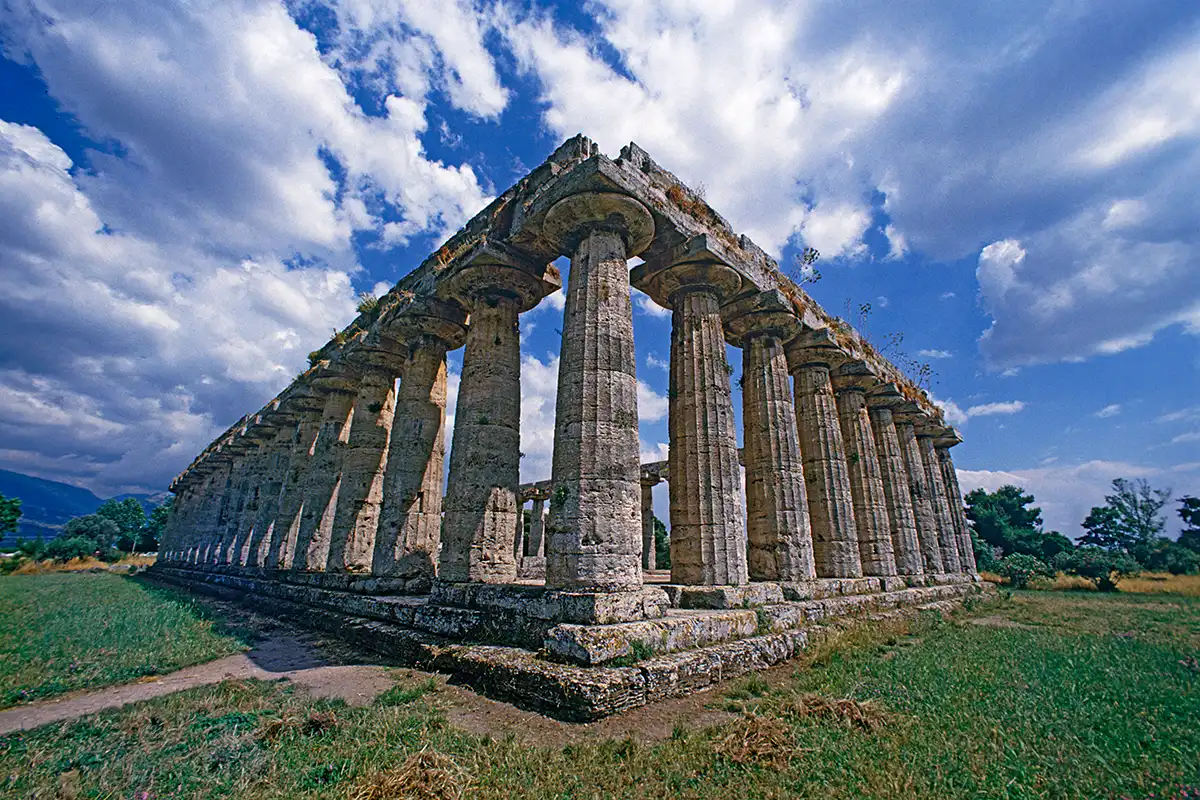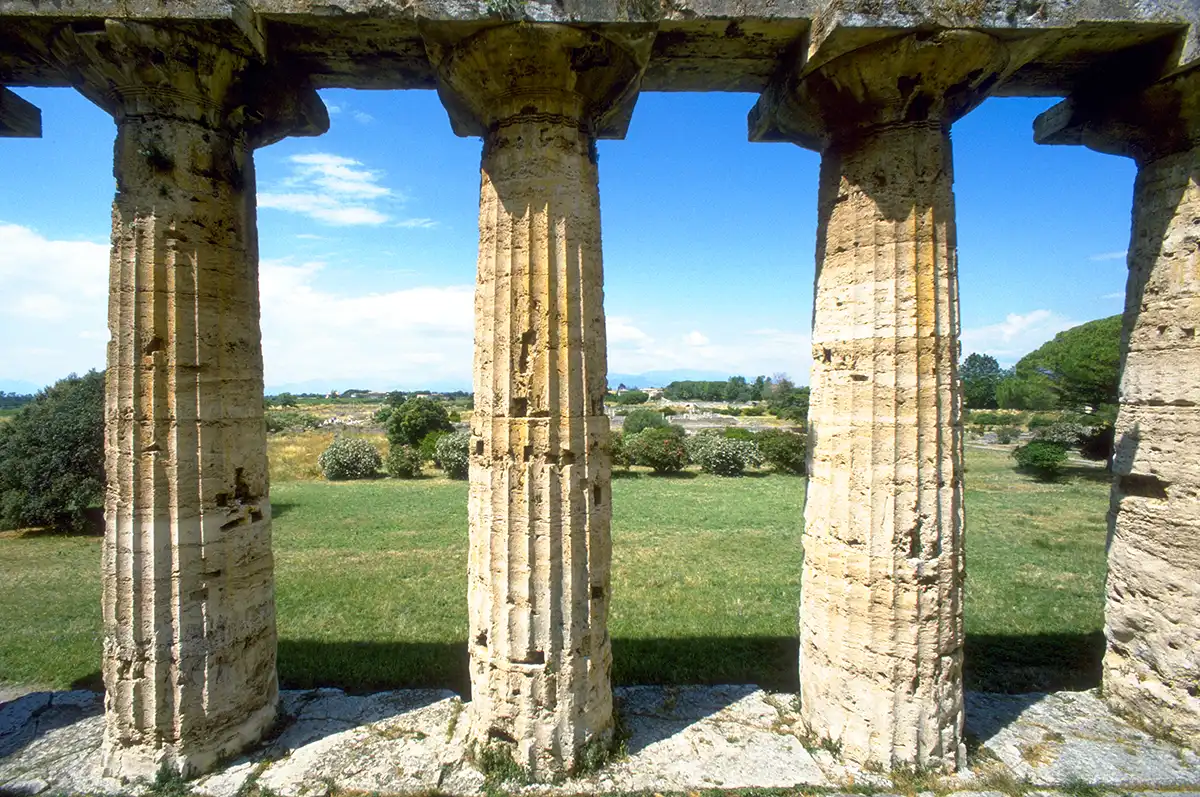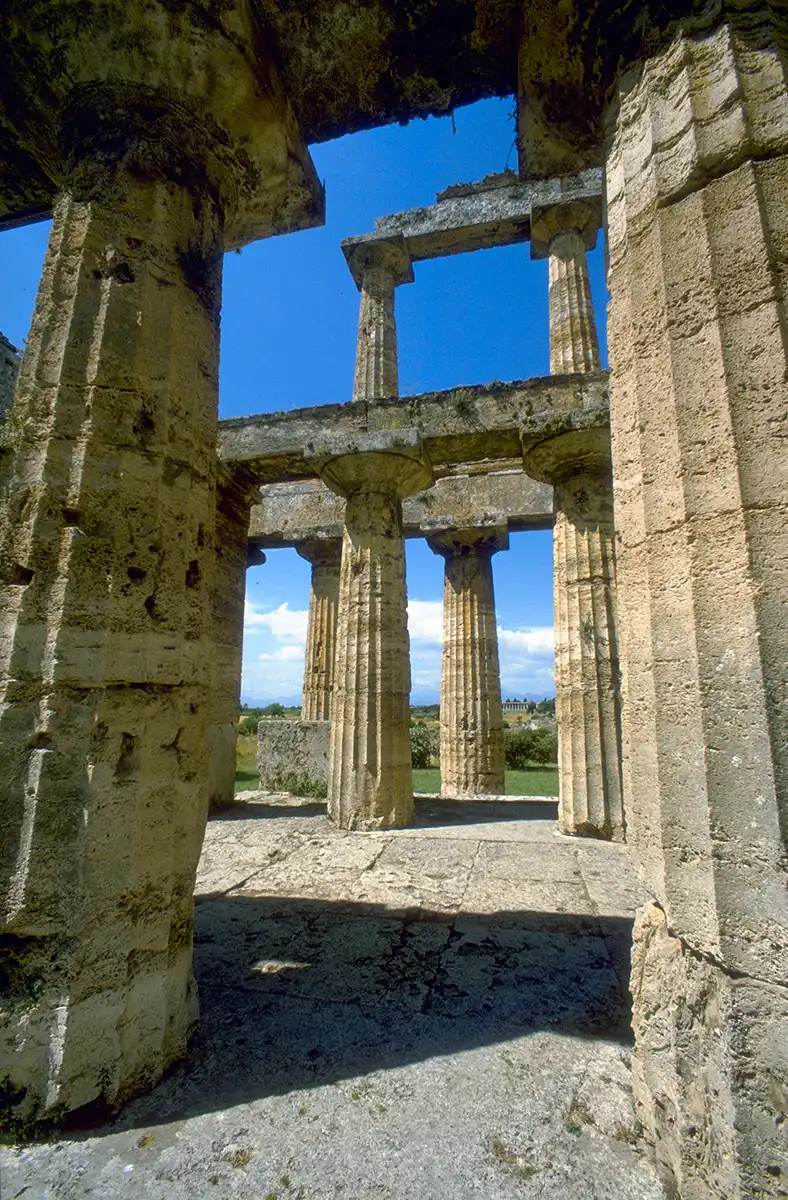Temple of Hera, Paestum
Approximately fifty-five miles (ninety kilometers) south of Naples, Italy, stands the ancient city of Paestum. Legends tell of the city's founding by Jason and the Argonauts, but archaeologists, uncomfortable with the stuff of legends, attribute Paestum's birth to 7th-century BC Greek colonists. Paestum was long known as Poseidonia, indicating that the site was once a ceremonial center of Poseidon (the Roman Neptune), the god of the sea. The two primary temples, the 550 BC Basilica and the 450 BC Temple of Neptune (shown in the photo), were originally dedicated to the fertility goddess Hera. A third temple on the site was dedicated to Athena, the goddess of wisdom, spiritual consciousness, and the arts. Poseidonia was conquered and occupied in 400 BC by the Lucans, an Italian people who ruled until 273 BC, when the city became a Roman colony. With the fall of the Roman Empire, the spread of malaria from nearby marshes, and Muslim raids in the ninth century, Paestum fell into decline and was deserted for many centuries. Rediscovered only in 1752 by an Italian road-building crew working in the area, Paestum is the finest preserved Greek temple complex in the Mediterranean world.
The initial temple dedications to feminine deities indicate that the site was originally sacred to prehistoric earth-goddess cults before its usurpation by the patriarchal Poseidon priesthood. Hera was a goddess of fertility and creativity, and Athena was a goddess of art and spiritual wisdom. Did Hera and Athena actually exist as discreet physical entities, or should these goddesses be understood as mythological encodings of the particular energetic qualities of the site? According to my theories, the gender of the primary deities at the site is an indication of the gender of the earth energies (what might also be called the yin and yang qualities of the site), and the personality characteristics of the deities are a metaphorical indication of how the site will affect human beings. Psychics and dowsers visiting Paestum note that the area of the ruins is conducive to the awakening and amplification of the capacity of artistic creativity. It is fascinating to note that a popular legend resonates with this idea. Childless couples flock to the temple of Hera to copulate beneath the night sky, believing that making love within the shrine of the goddess will call forth her fertilizing influence and thereby ensure pregnancy. At Paestum, Hera is not only a goddess of fertility but also a goddess of childbirth. Ultimately, these myths speak to us of the power of this place to birth newness in the human spirit.

Martin Gray is a cultural anthropologist, writer and photographer specializing in the study of pilgrimage traditions and sacred sites around the world. During a 40 year period he has visited more than 2000 pilgrimage places in 160 countries. The World Pilgrimage Guide at sacredsites.com is the most comprehensive source of information on this subject.



